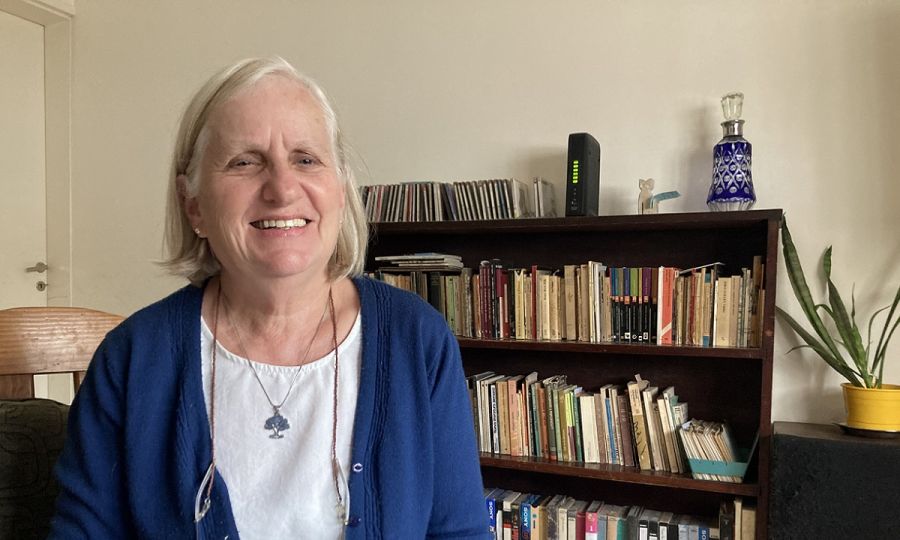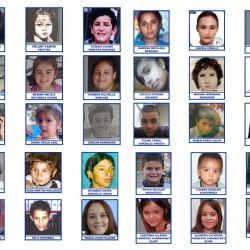Clapping on the beach, cries for help, the despair of fathers and mothers, children in tears because they have lost sight of their caregivers. A teen who vanishes from one moment to the next, a girl who was there, in full sight of everybody, but seconds later is gone.
The vast majority of lost children in Argentina return home, whether voluntarily or after an active community search, but many never come home. Today, some of the long-term missing are likely adults and their whereabouts remains a mystery.
Ana Llobet, the president of the Missing Children Argentina NGO, explains in an interview that even if the number is relative – new cases are filed and children reunited with their families every day, some three or four times a day on average – around 60 children are currently being sought across national territory. At the time we speak, the number of those missing for years stands at 43.
“We have tools for an immediate, intense and federal search, making it known everywhere that a child is missing and avoiding their leaving the country or something happening to them,” says Llobet.
She acknowledges that in many cases those tools prove insufficient and the searches can never be concluded. But in all cases, she stresses, spreading the word to as many people as possible can make the difference.
Llobet joined the NGO Missing Children Argentina initially as a volunteer in 2010 in the city of Bahía Blanca, Buenos Aires Province. Since 2020 she has served as the president of the organisation, which counts on the support of 18 volunteers who receive reports of the missing and publicise the cases.
“Everybody has a very intense job, working without [any] days off. There are people who dedicate their lives to this so that many missing children can return home,” she says proudly.
How many missing children and adolescents are there currently in Argentina?
At Missing Children [Argentina] we keep a file but we know that there are many more kids missing than the denunciations we receive. There are many cases in Buenos Aires Province, Misiones and Jujuy. At this moment in Argentina we are seeking 59 underaged persons while 43 went missing as children and [would be] adults today. We need to keep looking and broadcast the cases because somebody might at some time recognise them or have information. Nobody still knows what became of their lives. In total, Missing Children works with a figure of over 100.
How do you find out about them?
We receive many denunciations from the SIFEBU [Sistema Federal de Búsqueda de Personas Desaparecidas y Extraviadas] system of search for the missing and also from many police stations – also via social networks, perhaps more than before.
A majority of the cases denounced are female adolescents and they have gotten younger all the time in recent years – before they were 16, 17 or 18 and now they are 12,13 or 14 who in many cases both leave and return voluntarily.
What percentage of the cases denounced end up with the kids showing up and how many remain unsolved?
Over 95 percent of cases have a positive outcome, a very high number. Three, four or five cases are denounced daily, mostly kids who are found rapidly return home, sometimes spontaneously.
What happens is that there are around five percent of cases about which nothing is ever known and they are still out there. Those are the ones which worry us and drive us to organise campaigns. We note that after the campaigns there is an evident response, helping people to get in contact more and making visible a problem which people need to know about.
Our job is to spread the word but alone we are nothing – we need the response of the people.
Some cases have more media visibility than others while many more go completely unknown. Is there something that influences that?
Unfortunately, yes. I don’t know where the difference lies, making for more impact, sometimes they are smaller and more vulnerable…
The truth is that children have gone missing for a long time with nothing known about all too many of them who are not so much in the media like the case of Guadalupe [Lucero] or Sofía [Herrera]. Bruno Gentiletti went missing when he was very small and nobody knows anything, it wasn’t given the media splash of other cases.
I believe that the intervention of the SIFEBU and the media impact of [rapid emergency response system] Alerta Sofía* flashing lights everywhere has made the issue more visible. Maybe some other cases like Sofía Herrera would have been different with that media impact.
Even if it did not help in the case of Guadalupe, we have the tools for an immediate, intense and federal search, making it known everywhere that a child is missing and avoiding their leaving the country or something happening to them.

In such cases like Sofía and Bruno, photographic images of them are updated to gear the search to their present appearance.
Yes, updating the photos is very important. We send them to be done in Italy since Missing Children there facilitates us the means to do it. That is fundamental because if a kid went missing 10 years ago and we keep publishing their photo then, it is improbable that anybody will recognise them.
It’s not easy to do, many photographs of all the family circle are needed: grandparents, aunts and uncles, cousins. Those photos are not always easy [to produce] – sometimes the family cannot be found because it is dissolved or separated. But we always try to do it because it is one more aid towards updating.
I would imagine that cases of disappearances many years ago would have been very different without technology. Is that so or hasn’t it changed all that much?
Technology helps a lot. Today a denunciation is made and within an hour the photo is circulating around social networks and immediately the person who knows something can get in touch. It’s true that the social networks have many cons because many kids go missing due to the links they make there and that’s the negative part, but the truth is that technology helps the issue of diffusion a lot. It has permitted us to improve our activity over the years, above all where immediacy is concerned. Beforehand everything was much slower.
In the cases of the children who remaining missing, without news or updates, does there tend to be a common assumption as to what might have happened to them?
We don’t investigate and we don’t have the information investigators of the case have. One can hypothesise and think that if the clothing, body or anything else do not appear, somebody must have taken them away, but it does not stop being a subjective question in absolute ignorance of the details of the case. Our hypothesis is that some day they will appear and we keep publishing for that reason because we do not know what happened. We insist on publishing the photo so that people feel that it is a responsibility of the community that the boy or girl appear.
How to help
- For provide information or to denounce the case of a missing child, Missing Children Argentina can be contacted via Whatsapp at 11 4157 3101 or via email: [email protected]
- For anonymous denunciations, authorities can be reached by calling 134 nationwide or 102 in the City of Buenos Aires, 24 hours a day.
Disappearance of a child: what to do
Missing Children Argentina have created a guide with steps to follow should a boy or girl disappear.
- As soon as you suspect a child is missing, call their friends and classmates to find out when they were seen for the last time and what information they can offer. “The first thing is to focus on the immediate entourage,” explains Llobet.
- Call all relatives, telling them about the situation and seeing if any have some information.
- Find out if they were carrying a mobile telephone, a SUBE public transport card or clothing.
- Report the disappearance at the nearest police station and include an authorisation for Missing Children Argentina to publicise the image. If they refuse to take it with the excuse that it would be better to wait 24 or 48 hours, say you know your child to be in a "situation of risk" and insist that they advance on the information. “You must report it immediately and the police must act immediately because it is a child. When you lose a child, you do not know if they will reappear in a few hours, the next day or never so the denunciation must be made,” explains the president of Missing Children Argentina. “If they say it cannot be done, take it to a prosecutor’s office and file it there. The denunciation enables all the tools to be placed at the disposal of looking for the child,” she adds.
- Ask for a copy of the report and find out where it is filed at the police station in order to give full public exposure to the disappearance, supplying all details and contributing a photo of the child that is as up-to-date as possible.
* Alerta Sofía is named after Sofía Herrera, a youngster who went missing in 2008 in Tierra del Fuego Province and is still sought. The system, installed in 2019, issues rapid emergency alerts and is operated by the National Security Ministry. It aims to coordinate the search work between the public and private sectors, the media and civil society. The focus is massive broadcasting geared to the cases of a single missing child or adolescent in a situation of “high imminent risk.”





















Comments